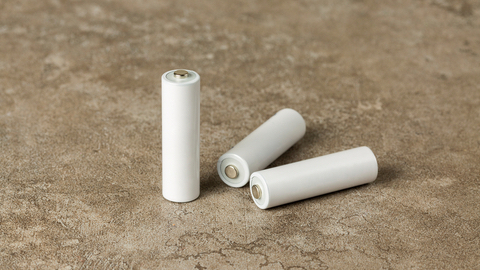
Researchers from the Skoltech Center for Energy Science and Technology (CEST) in Russia have created a new cathode material based on titanium fluoride phosphate which has achieved superior energy performance and stable operation at high discharge currents.
Current energy storage solutions are based on metal-ion batteries using lithium or cobalt, but both metals are expensive and supplies are limited. This has led to the need for research using more accessible and less expensive elements – such as potassium instead of lithium and iron, manganese, and titanium instead of cobalt. Titanium is the tenth most common element in the Earth’s crust and is mined globally, but its low electrochemical potential that limits the battery’s attainable specific energy has been a stumbling block for using titanium compounds in cathode materials.
Skoltech scientists succeeded in creating a commercially attractive, advanced cathode material based on titanium fluoride phosphate – KTiPO4F – which exhibits a high electrochemical potential and unprecedented stability at high charge/discharge rates.
“This is an exceptional result that literally destroys the dominant paradigm long-present in the “battery community” stating that titanium-based materials can perform as anodes only, due to titanium’s low potential. We believe that the discovery of the “high-voltage” KTiPO4F can give fresh impetus to the search and development of new titanium-containing cathode materials with unique electrochemical properties,” said lead researcher, Stanislav Fedotov.
Professor Artem Abakumov, Director of CEST: “From the perspective of inorganic chemistry and solid state chemistry, this is an excellent example showing once again that rather than blindly following the generally accepted dogmas, we should look at things with eyes wide open. If you choose the right chemical composition, crystal structure and synthesis method, the impossible becomes possible and you can find new materials with unexpected properties and new opportunities for practical applications. This has been brilliantly demonstrated by Professor Fedotov and his team.”
